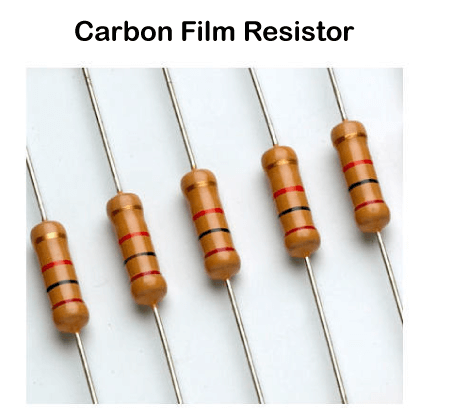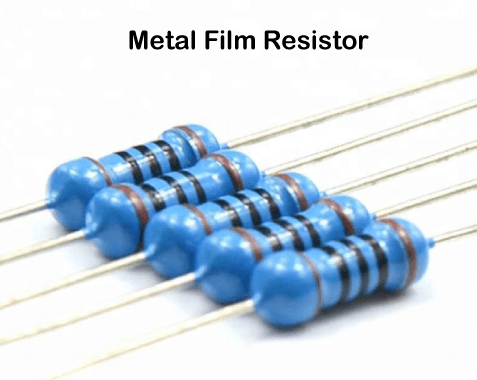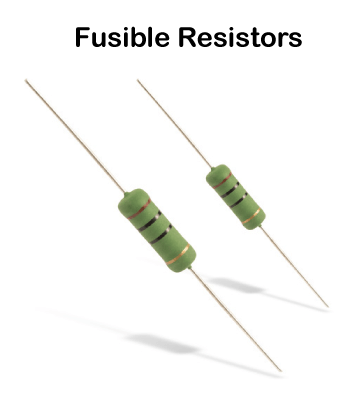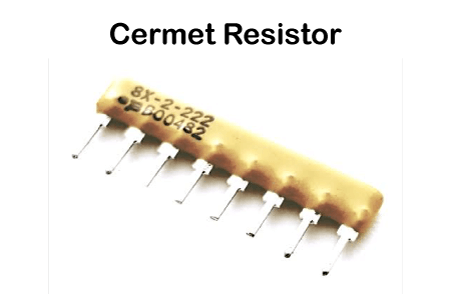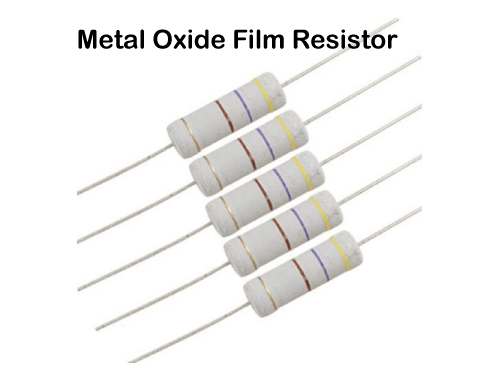Types of ResistorsResistors are the most common and widely used components in electronic circuits, devices, and equipment. Due to widespread use, there is a wide range of resistors with different characteristics. Although most resistors work in various applications, it is always recommended to obtain the right type of resistor based on the specific requirement to achieve maximum performance. But first, we must know about the different resistors and their significant characteristics. In this article, we are discussing the different types of resistors. Before discussing various resistor types, let us first go through a resistor's definition and the circuit symbols used to represent it. What is a Resistor?A resistor refers to a device or a component designed primarily to obstruct the electric current flow. It is known as the passive two-terminal device that helps regulate current-flow. A resistor typically has a particular amount of resistance through which it opposes or limits the electric current passing across it. 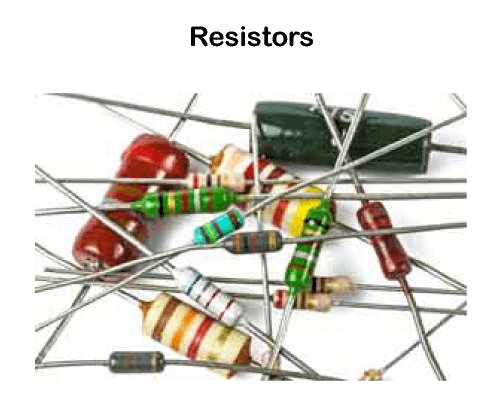
According to the laws of resistance, the resistance (R) of any resistor directly depends on its resistivity (ρ), length (l), and cross-sectional area (a), i.e. In electronic circuits, resistors are also utilized for various other requirements, such as adjusting signal levels, reducing current flow, active bias elements, terminating transmission lines, dividing voltages, etc. Otis Frank Boykin first introduced a resistor in 1959. Glass, mica, wood, rubber, etc., are some examples of resistant materials. Note: Resistance is one of the critical factors used in electrical and electronic circuits. Resistance is the property of materials to resist the flow of electricity, and Ohm's Law governs it. The unit of resistance is OHM (Ω), where 1Ω = 1V/1A.Symbols of ResistorThere are mainly two different circuit symbols of resistors. One of both symbols is the oldest circuit symbol used for resistors and is mostly used in North America. This particular symbol consists of a zigzag line that indicates the wire used in resistors. The other symbol consists of a small rectangular shape instead of a jagged line. This second resistor circuit symbol is often called the international circuit symbol of a resistor and is used widely in Asia and Europe. 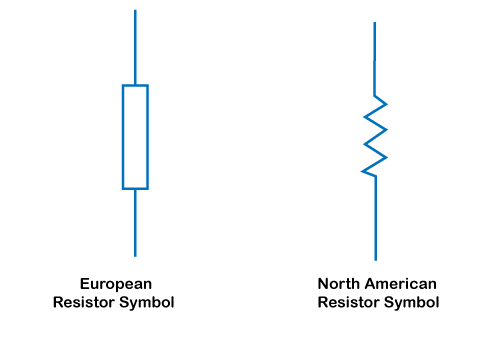
Types of ResistorsThere are many different types of resistors used in various electronic components. Each one has its characteristics, applications, and specific advantages. Various resistors vary in their construction, sizes, shapes, power dissipation capability, and tolerance levels to different parameters. However, the most common types of resistors are broadly divided into the following two categories:
Let us understand each type in details: 1. Linear ResistorsLinear resistors are the type of resistors in which the value fluctuates based on the applied temperatures and voltages. Most of the resistors are linear, and they produce voltage drops when an electric current flows across them. On the other side, linear resistors are also defined as resistors in which the current value is directly proportional to the voltage applied across them. Linear resistors are further sub-divided into the following two types:
A) Fixed ResistorsFixed resistors are the most common type of resistors. These resistors are mainly used in electronic circuits to configure the right conditions within the circuits. One of the main characteristics of fixed resistors is that their value is fixed (constant resistance value) and cannot be changed. The values in fixed resistors are determined in the designing phase of their circuits. A wide range of resistor materials is used for manufacturing fixed resistors. Moreover, resistors' material decides the resistor properties such as tolerance, cost, noise, use, etc. 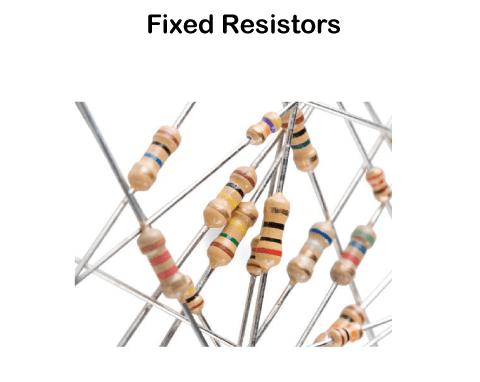
Fixed resistors are mainly classified into the following four types: (i) Thin Film ResistorThin resistors are composed using a high grid ceramic rod and resistive materials. A thin layer of resistive material is coated onto the insulating substrate, such as an insulating rod, tube, or plate made up of a high ceramic substance or a glass. The resistive element for thin-film resistors is about 1000 angstroms. These resistors are best known for the better temperature coefficients, low parasitic inductance, lower capacitance, and low noise. Thin-film resistors are mostly used for microwave active/passive power elements, including power resistors, power terminations, and power attenuators. Furthermore, these resistors are suitable for applications requiring higher accuracy and stability. Thin Film Resistor has the following types:
(ii) Thick Film ResistorThe manufacturing process of thick film resistors is almost the same as the thin film resistors. The only noticeable difference is that there is a thick film or a layer in thick film resistors instead of a thin film used in thin-film resistors. The film used in these resistors is thousands of thicker than thin film. Furthermore, the thick film resistors are composed using a mixture of ceramics and powdered glass. These resistors have better tolerance levels (nearly 1-2 %) and temperature coefficient (lies between -200 to -25 and +200 to +250). Like thin film resistors, thick film resistors are also available at low cost. Thick Film Resistor has the following types:
(iii) Carbon Composition ResistorCarbon composition resistors are composed using a mixture of carbon granules and binder elements. The arrangement is structured in a shape of a small rod. But these resistors are comparatively large compared to the other resistors. Besides, the carbon composition resistors suffer from a large negative temperature coefficient. When the current flows across these resistors, they produce relatively more noise than the other resistors. In particular, carbon composition resistors are an older type of resistors that were very common before the manufacture of today's standard resistors. 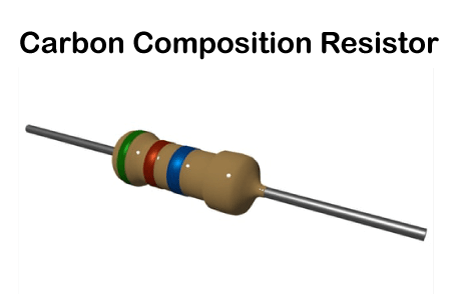
(iv) Wire-wound ResistorWire-wound resistors are composed by winding the higher resistance wire around the general resistance. These resistors have metallic bodies to help them in heat-sink mounting. This means these resistors may become too hot during the operations, and therefore, they are housed around finned metalcore. Moreover, wire-wound resistors are best known for higher power ratings and low resistive values. 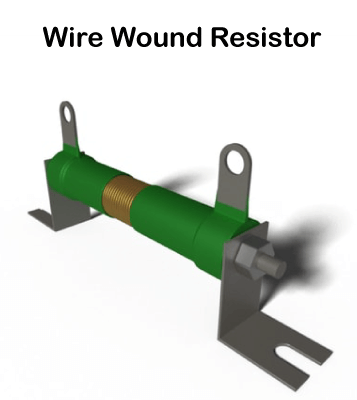
B) Variable ResistorsUnlike fixed resistors, the resistance value in variable resistors can be adjusted accordingly. Most variable resistors are controlled using a dial, knob, screw, or manually by appropriate mechanical movements (usually linear and rotary). The variable resistors contain fixed resistor components and a sliding arm that typically taps onto the main resistor component. This eventually adds three connections to the device, such as- one connection linked to the slider and two connections attached with the fixed component. Doing so makes the device act as a variable resistor when all three connections are in use. 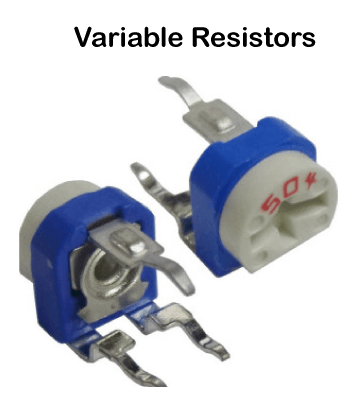
Variable resistors are mainly classified into the following three types: (i) PotentiometerA potentiometer refers to a three-terminal device designed for adjusting the voltage-levels in circuits. In this arrangement, the resistance remains constant between the two terminals. Moreover, the third terminal is attached with moving contact (called the Wiper), which is again connected to the control shaft. The wiper can be rotated to arrange the value of resistance accordingly. These resistors are also sometimes called variable composition resistors. 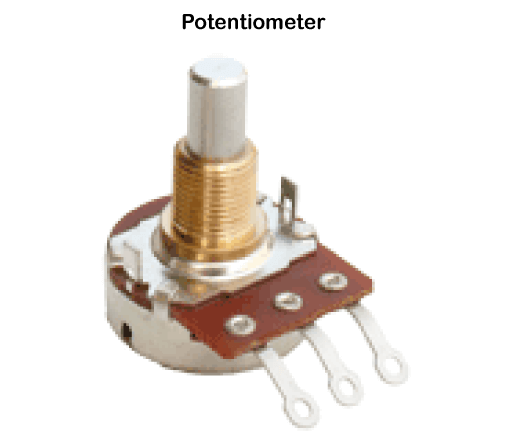
(ii) RheostatRheostats can be either two-terminal or three-terminal devices designed mainly to limit the current with manual operations. Rheostats are manufactured by wire-winding Nichrome resistance around ceramic rod assembled further in a protective shell in terms of construction. These resistors are also called variable wound resistors or tapped resistors. 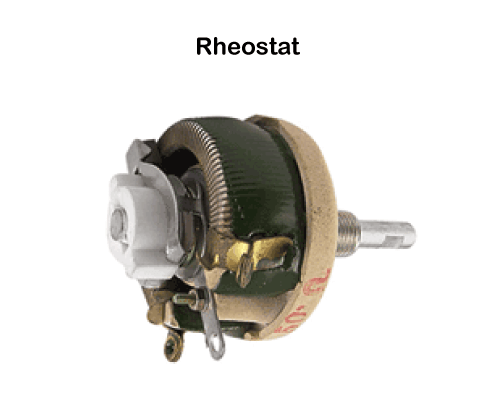
(iii) Trimmer ResistorAn additional screw attached with a potentiometer or variable resistors resulting in better operations and efficiency is the type of trimmer resistor. The main advantage of these resistors is that their resistance value can be arranged by changing (rotating) the screw position. These resistors are generally composed of carbon film, carbon composition, cermet, wire materials, etc. 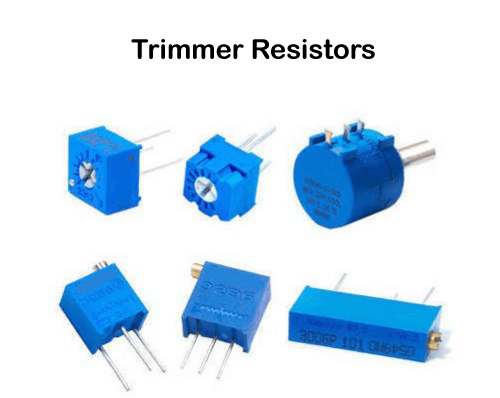
2. Non-Linear ResistorsNo-linear resistors are resistors in which the current flowing through them changes only with the change in applied voltage or the temperature. These resistors typically do not follow Ohm's Law, and the current flowing through resistors does not change according to it. Non-Linear resistors are further sub-divided into the following types: ThermistorThermistors are those types of resistors in which the resistance changes significantly with the change in temperatures. These resistors are heat-sensitive two-terminal devices. The resistance of these resistors is inversely proportional to the given temperature. Although there are many thermistors, the two most common ones are NTC and PTC thermistors. NTC thermistors have a negative temperature coefficient, and their resistance decreases when the temperature increases. Besides, PTC thermistors are a positive temperate coefficient, and their resistance increases when the temperature increases. Thermistors are primarily used as thermal protection components or temperature sensors. 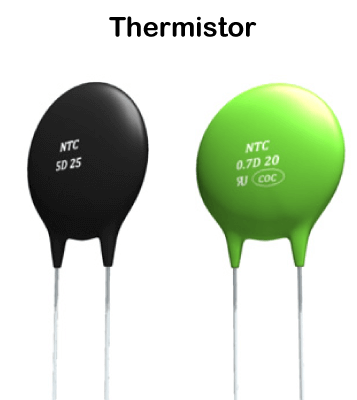
Photo Resistor/ LDRLDR is a short form of Light Dependent Resistors. They are also termed photoresistors. These are resistors in which the resistance changes with the level of light. Furthermore, the resistance significantly decreases when the intensity of incident light increases. These resistors find their use in various sensor applications and are considered a cost-effective solution. They are most commonly used to differentiate light or dark situations. They help to turn on street lights in the evening automatically. Although photoresistors are cheap and easy to assemble in circuits, they sometimes lag in the time required to respond to light change situations. 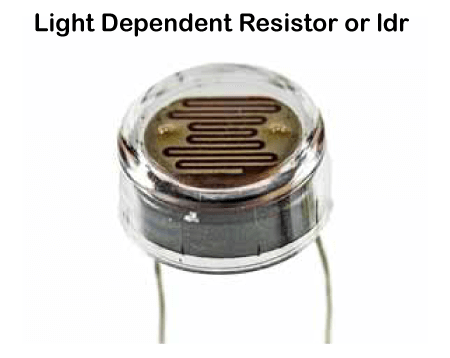
Varistor ResistorWhen the term 'varistor' is divided, it gives an idea of two different terms, such as 'varying' and 'resistor'. In simple words, varistors are the type of resistors that can vary their resistance according to the applied voltage. That is the reason these resistors are best suited for spike and surge protection. Varistors contain non-linear resistance, which is entirely dependent on the voltage applied across the varistor. Once the voltage reaches a specific threshold limit, the varistor's resistance drops at a faster speed. It is important to note here that each time the varistor has a spike, the properties may change slightly. There are many types of varistor; however, MOV (metal oxide varistor) is the most common and widely used form of the varistor. 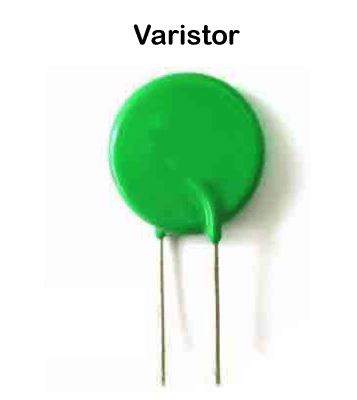
Surface Mount ResistorsSurface-mount resistors, also called SMD in short, are manufactured in different package sizes and structures. However, their most common shape is a rectangular shape. These resistors are usually composed by depositing a film of resistive material. Because these resistors are relatively small, they don't have sufficient space for color-code bands. However, they contain a three-number unique code that works similarly to color code bands designed on wire-ended resistors. SMD resistors are mainly developed to be used with surface mount technology (SMT). SMD resistors are best known for providing high-level performance. 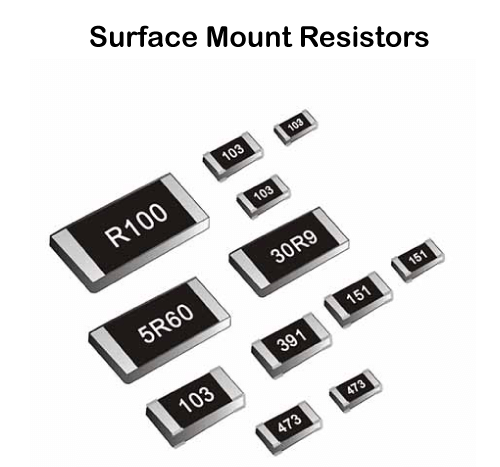
Applications of ResistorBased on the requirements, a different type of resistor is used. Both types of resistors (such as linear and non-linear) are used widely for specific purposes. The following are some most common applications of resistors:
Next TopicAuthentication Vs. Authorization
|
 For Videos Join Our Youtube Channel: Join Now
For Videos Join Our Youtube Channel: Join Now
Feedback
- Send your Feedback to [email protected]
Help Others, Please Share




